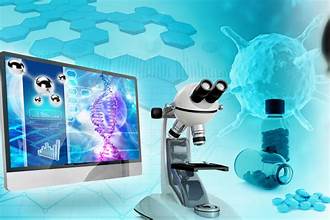
Course content
- Module 1
- Module 2
- Module 3
- Module 4
- Module 5


Understand Bioinformatics Concepts
Manipulate DNA and protein sequences
Build your first computer program
Develop scripts in the Python programming language
Biopython Library
Welcome to the “Introduction to Programming for Bioinformatics with Python” course. Recently, the new sequencing technologies have allowed new discoveries for Life Sciences. However, computer skills became highly necessary to deal with big biological data. Hence, knowing how to build computer programs is essential to Bioinformatics.
In this course, you will learn the basics of programming for developing computer programs applied for Bioinformatics. You will also learn about creating your first algorithms, creating pipelines using the programming language Python, and analyzing biological databases. Python is the main programming language used for bioinformaticians.
This course is ideal for students who are starting in the field of bioinformatics and who do not have previous knowledge of programming.
You will also learn in this course:
• What are computer programs?
• How to create your first scripts?
• What is Python?
• Using the Colab web tool
• What are variables?
• Objects in Python
• Logical operators
• Variable types: strings, integers, Boolean
• Sequences in Python: lists, dictionaries, and tuples
• What are conditional statements?
• What are iterative statements?
• How to compare sequences
• Bioinformatics file types
• What is a software library?
• What is Biopython?
• How to convert a sequence from a string into a Biopython object?
• Manipulating sequences using Biopython
• Translation and transcription using Biopython



Python in Bioinformatics
This is a course intended for beginners interested in applying Python in Bioinformatics. We will go over basic Python concepts, useful Python libraries for bioinformatics/ML, and going through several mini-projects that will use these Python/ML concepts. These mini-projects include a sequence analysis (with no libraries) Python example, a Python sequence analysis example using libraries, and a basic Sklearn Machine Learning example.


Machine Learning
Artificial Intelligence
Bioinformatics
Image Analysis
Programming
This free course is heavily based on the ideology of “learning by doing” and, as a result, will be very hands-on. Students will learn a lot more about the emerging field of the future, artificial intelligence, and machine learning, through a series of mini-projects relating to biology in a field known as bioinformatics that can be expanded on after the course. As a result of the projects being done throughout the course, students will also gain further research and publication ideas, such as science fairs and journals. These projects include:
